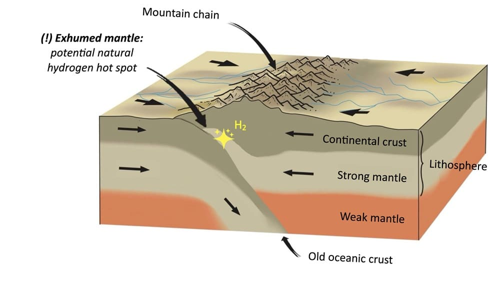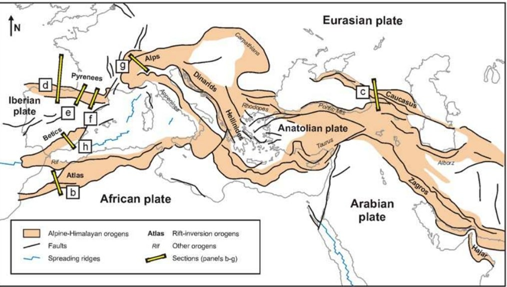Geologists have identified locations on Earth where rich hydrogen reserves are formed.
In nature, hydrogen is formed through several processes. For instance, it can be produced during the decomposition of organic matter or the splitting of water molecules due to the decay of radioactive elements within the Earth's crust. Natural H2 flows have been recorded in various locations around the globe. In Mali, pilot projects are utilizing hydrogen from a small natural reservoir found in sedimentary rocks.
Researchers led by Frank Zwan from the GFZ Helmholtz Centre for Earth Sciences (Germany) have developed a method to identify hydrogen deposits based on plate tectonics modeling. Their findings indicate that potential "hot spots" for gas formation are located in mountain ranges where mantle melts rise close to the surface. The results of this study have been published in the journal Science Advances.

Large volumes of H2 are generated when mantle rocks interact with water within a narrow temperature range. Under the influence of solutions, some minerals are replaced by others from the serpentine group. This process is referred to as serpentinization. Along the way, hydrogen is released, which can accumulate in trap layers.
For serpentinization to occur, mantle material must ascend to the surface, as there is water along this path. This process takes millions of years. On Earth, it occurs in rift zones—deep fractures that split the land or, conversely, during rift closure when mountain ranges form at the collision points of continental plates.

Scientists have modeled all stages of plate tectonics—from continental rifting and ocean formation to its collapse and mountain uplift. They traced how much mantle material reaches the surface beneath mountain ranges and when these rocks can come into contact with water at temperatures favorable for serpentinization.
The modeling revealed that optimal conditions arise during mountain uplift rather than rift formation. The temperature regime is cooler there—between 200-350 degrees Celsius—and larger volumes of water circulate along major faults.
According to the authors' estimates, mountain ranges produce hydrogen at a rate 20 times greater than rifts per year. Suitable reservoir rocks, such as sandstones, are present there. In rift basins, these are likely absent during serpentinization. This is supported by the natural H2 occurrences in the French Pyrenees. Increased concentrations of this gas have been noted in the Western Alps. In the Caucasus, a well drilled during the Soviet era supplied gas for several months. All these locations are situated in the western part of the Alpine fold belt, which, according to the authors, holds the most promise for hydrogen exploration.